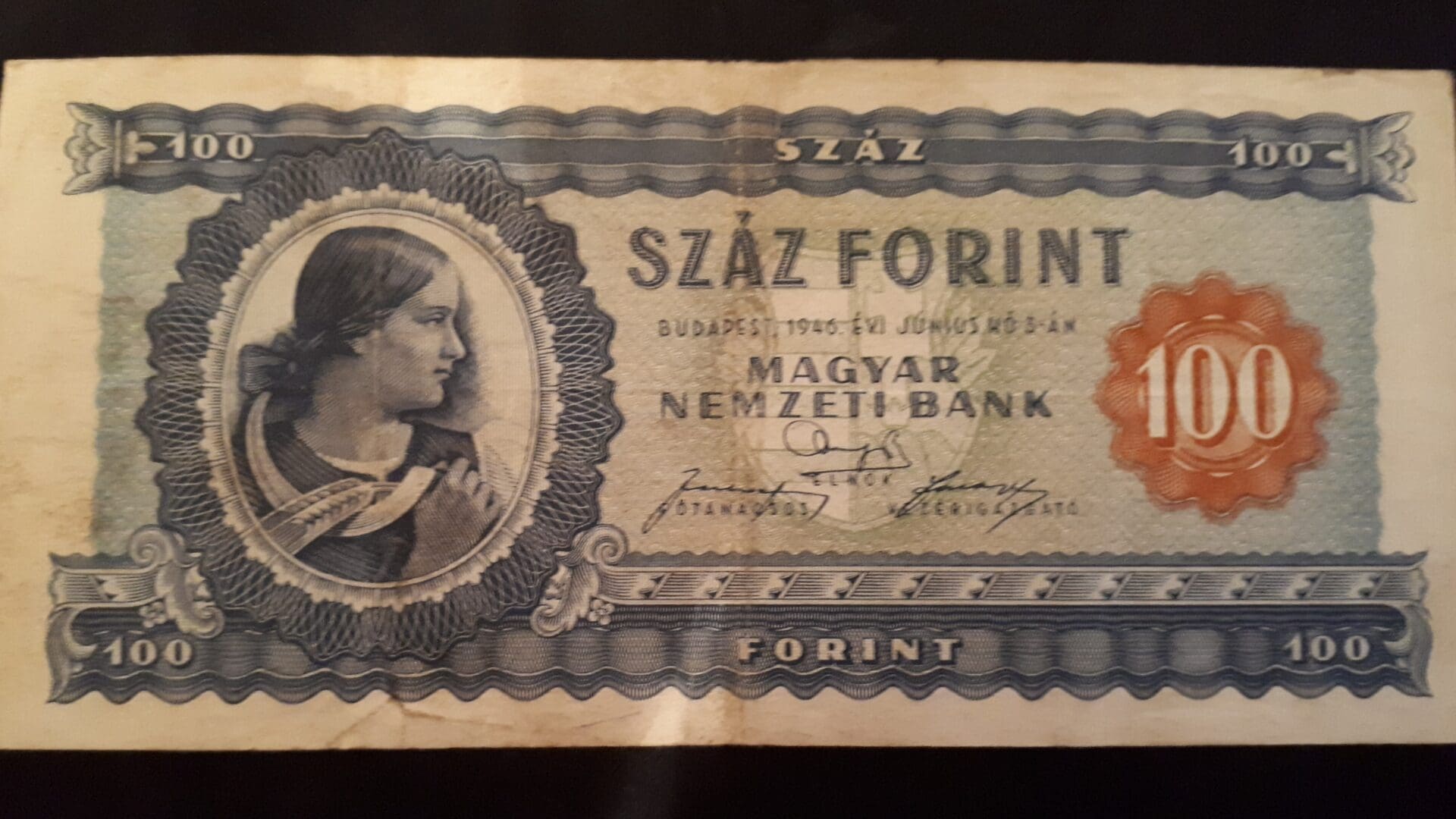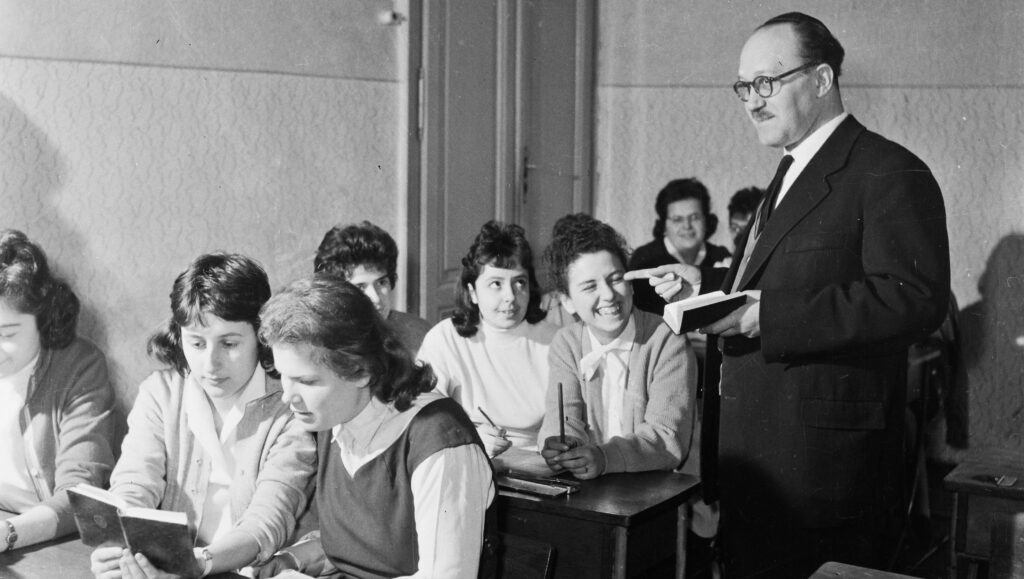The Hungarian currency, the forint (HUF) celebrates its birthday today, on 1 August. It was on this day that Hungary introduced the forint as its official currency in 1946—–in other words, the forint has just turned 77!
Replacing the Pengő
Hungary’s previous currency, the pengő, used between the two world wars (1927–1946) was abandoned due to one of the most serious cases of hyperinflation ever recorded in world history. At the time when the forint was introduced, Hungary was living through an economically turbulent time. In the wake of WWII, the country, its infrastructure and the economy were in ruins, and people mostly engaged in barter deals, especially due to the pengő rapidly losing its value. Prices doubled every 15 hours, while the monthly inflation rate approached 4.19 x 1016.
Due to the hyperinflation, when the forint was introduced, the pengő was exchanged at a rate of 4 x 1029/1 HUF. The new currency introduced stability into the economy and stopped the hyperinflation.
Printing Challenges
Printing the banknotes of the new currency proved to be a difficult task, however. Due to the hyperinflation, a large amount of currency paper was used to issue pengős—as a result, there was a shortage of proper paper in Hungary at the end of the war. As a result, the first series of forints were printed on low quality currency paper imported from France and Finland. In addition, also because there was not enough paper available, in the first year of the forint’s modern-day existence, only 10 and 100 notes were issued. Since these first banknotes were of quite bad quality, both currency forgery and the banknotes wearing out rapidly presented a serious challenge.
Over the years, newer and newer bills were added to the original set of notes. The 500 bill was introduced in 1970; later, in 1983 came 1000 bill; in the 1990s, the 5000, 10000 and 20000 bills were also put into circulation. In 2008, the 1-and 2-forint coins were removed from the economy, as issuing these coins was more expensive for the National Bank than the coins’ actual worth.
Paper Quality Improves
Not only more bills were added to the original series, but the quality of the paper the forint was printed on also improved. While in 1946, the paper the forint was printed on lasted only for a year, now it wears out in four to five years. Once the torn or otherwise damaged bills are handed over to the National Bank they are destroyed—they are cut into tiny pieces and then compressed into bricks. These bricks have a high calorific value as the currency paper includes cotton, comparable to that of brown coal. Since 2008, the Hungarian Central Bank supplies these bricks to charity organisations who distribute them among those in need.
The Historical Forint
1946 was not the first time when forint was issued in Hungary. The first time the official currency became the forint was under the reign of Charles I (or Charles Robert) of Hungary in the 1320s. At the time the currency was named after the coin, called the fiorino d’oro, or golden lily, minted in the city of Florence, Italy and that had been in circulation from 1252. Later, the pronunciation of the coin’s name was distorted in Hungarian and thus became forint. The coins minted under Charles’ reign where among the finest and most stable currencies issued at the time. Preserving historic tradition, between 1857 and 1892 the Habsburg Empire, and later, the Austro-Hungarian Monarchy, also used the forint as its official currency.
In other words, the forint currently in use that celebrates its 77th birthday is actually the third Hungarian currency called forint. In honour of the king under whom forints were minted for the first time, between 1998 and 2009 a 200 banknote had the image of Charles I on it. In 2009, the 200 banknote was withdrawn from circulation and replaced with a coin that has the image of the world-famous Chain Bridge. Part of the reason for changing the design on the coins was that Charles’ portrait was completely fictional—there are no known depictions of the king. As a matter of fact, Charles I’s face was modelled after one of the friends of the designer, Károly Vagyóczky.







